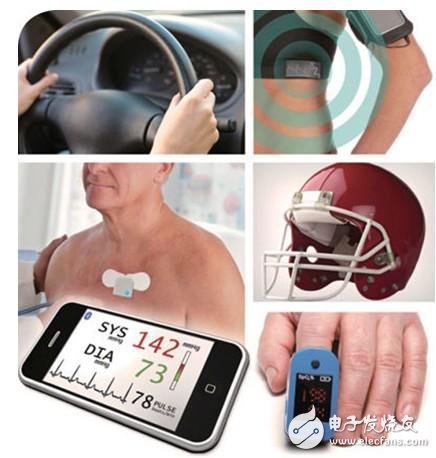When the term “family health monitoring†is proposed, the scope of monitoring is not limited to the four walls in which we live, but the vital signs when individuals are outside the hospital environment. Since “home†is theoretically the place we spend the most time, the term “family health†is used. However, people are monitored rather than the environment (although the environment plays an important role in determining how to measure and transmit vital signs). If “Home Health Monitoring†is renamed “Personal Health Monitoringâ€, the walls will naturally disappear, and the places and methods of measuring vital signs will have no boundaries. This article will examine the revised concept of “family health†monitoring, in which, literally, “family†is the heart of the people.
Health care is changing, and our expectations of the type and level of care we need are also adjusted to accommodate these changes. In developed countries, investment in the medical industry has led to significant advances in diagnostics and health monitoring. The general expectation of the majority is that the medical industry will continue to develop, and people in developed countries will easily enjoy the results, and these results will also benefit those regions of the world that have received little support in history. However, with the spiral of medical costs, people have realized that this expectation may need to be changed. Globally, medical services vary greatly from region to region. Although the idea of ​​enjoying medical care for everyone is theoretically very noble, there is still a long way to go before reality.
Innovative technology reduces healthcare costsOne way to reduce the cost of medical services is to use the latest innovations to enable patients to be discharged quickly and safely. By continuing treatment and monitoring at lower cost locations, such as at home, the cost of the medical system can be reduced. Patients can benefit from rehabilitation in a comfortable environment. In order to ensure the safety of patients, in order to reduce the cost of repeated hospitalization, it is necessary to design a high-performance vital sign monitoring (VSM) device to support the patient environment.
Out-of-hospital monitoring (excluding clinics and doctor's offices) is often associated with traditional home environments. Historically, family medical and health monitoring has been reflected in thermometers, weight scales, and some families also have sphygmomanometers. For disease management, with the rapid increase in the incidence of diabetes, blood glucose meters are currently the most widely used medical devices. To a certain extent, heart rate monitors (HRM) for exercise and fitness are primarily designed for chest straps or hand-held electrodes on gym treadmills and are also classified as off-hospital or remote monitoring markets.

Figure 1: Traditional household monitoring equipment.
Numerous reports, papers, and research explore the benefits of remote health monitoring technology, but just look at how many companies and organizations invest time and effort to integrate VSM into end systems, and soon discover that remote The health environment is much larger than the traditional home or gym. The out-of-hospital VSM market is growing rapidly and is likely to outpace many other market sectors.
A variety of forces work together to promote VSM in different market segments, including:
Negative driving force:* Global need to curb and reduce spiraling medical costs (in the US, medical spending accounts for about 18% of national GDP)
* An aging population (by 2030, the population over 65 will exceed the age of 5 for the first time) is putting unprecedented pressure on the medical system
* Unhealthy lifestyle (obesity is the leading cause of chronic diseases, including diabetes, high blood pressure and lung disease)
Positive driving force:* Communication infrastructure that makes it easy to access medical resources around the world
* Technological advances that make remote health monitoring possible and consistent with our lifestyle
* Increase the variety of support infrastructure that motivates people to maintain a healthy lifestyle
* People's prevention of preventive health monitoring can reduce hospitalization awareness

Figure 2: The broad “family†vital sign monitoring (VSM) market.
Market areas that are actively exploring include:* Hospital (to bring monitoring to the family)
* Auxiliary living facilities
* Sports design, including sports grounds
* School / Educational Institution
* Insurance / Corporate Funded Health Plan
* Army
* Automotive industry
* Consumer industry (smart phones, smart watches, games)
* Animal health (livestock management, pet care)
In these market segments, although vital signs of surveillance have in common, environmental constraints and the way in which information is interpreted and used can have a significant impact on the effectiveness of monitoring devices. As a technology leader, ADI has introduced innovative solutions specifically for these constraints.
Although technically, animal health monitoring is not a category of human health problems, it is a fast-growing market with some of the same scientific and technological results as human health monitoring devices.

Figure 3: How to monitor vital signs.
Vacuum Cleaner Bldc Dry Motor,Vacuum Cleaner Bldc Motor,Dry Bldc Motor For Vacuum Cleaner,Bldc Brushless Motor Vacuum Cleaner
Zhoushan Chenguang Electric Appliance Co., Ltd. , https://www.vacuum-cleaner-motors.com